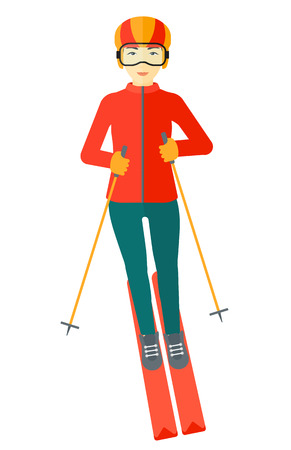Understanding Low Visibility in the UK Countryside
When navigating through the British countryside, encountering low visibility conditions is not just an occasional inconvenience—it’s a regular part of rural travel. The unique combination of Britain’s maritime climate and its varied landscapes means that drivers and walkers alike are often challenged by fog, rain, and darkness. Fog is especially prevalent in low-lying areas, valleys, and near water bodies due to the frequent temperature shifts between day and night, particularly in autumn and spring. Rain, a constant companion in much of the UK, can quickly transform open fields and winding lanes into slippery, shimmering ribbons that reflect headlights and obscure road markings. Additionally, the countryside’s narrow roads, high hedgerows, and absence of street lighting intensify the challenges after sunset or during heavy weather. Seasonal changes further complicate matters—winter brings longer nights and early morning mists, while summer can surprise with sudden downpours or lingering twilight. Understanding these typical patterns is essential for anyone hoping to navigate rural Britain safely and confidently.
2. Essential Preparations Before Setting Out
Venturing into the British countryside under low visibility conditions requires thorough preparation, especially when the weather can change rapidly and unpredictably. Whether youre navigating winding lanes in thick fog, heavy rain, or the pitch-black of rural nightfall, making sure both you and your vehicle are ready is paramount.
Vehicle Maintenance Checks
Before any journey, particularly in adverse conditions, a basic but thorough check of your vehicle is crucial. This helps prevent breakdowns on remote country roads where assistance might be delayed. Heres a quick reference checklist:
| Check | Why Its Important |
|---|---|
| Lights (headlights, tail lights, indicators) | Ensure maximum visibility to see and be seen in fog or rain |
| Wiper Blades and Washer Fluid | Clear windscreen for improved vision in wet weather |
| Tyre Tread and Pressure | Optimal grip on muddy or slippery lanes |
| Brakes | Effective stopping power on unpredictable surfaces |
| Battery Health | Cold and damp can drain older batteries quickly |
Torches and Lighting Essentials
A reliable torch (known as a flashlight elsewhere) is indispensable. Opt for a robust, water-resistant model with spare batteries. Head torches are ideal for hands-free tasks, such as checking under the bonnet or setting up warning triangles at night. Consider keeping an extra torch for passengers or as backup.
Hi-Vis Gear and Clothing Choices
British country lanes often lack pavements and street lighting. Wearing high-visibility vests or jackets ensures other road users spot you if you need to leave your vehicle. Reflective bands for wrists or ankles add another layer of safety, especially in misty conditions common across much of the UK.
Emergency Kits Tailored for British Conditions
Your emergency kit should reflect local realities—think persistent drizzle, mud, and chilly nights even in summer. Here’s a suggested contents list:
| Item | Purpose/Notes |
|---|---|
| First Aid Kit | Treat minor injuries while awaiting help |
| Thermal Blanket | Keeps you warm during unexpected delays |
| Mobile Phone & Charger (preferably power bank) | Essential for contacting roadside assistance; coverage can be patchy in remote areas |
| Bottled Water & Non-perishable Snacks | Sustain yourself if stranded for longer periods |
| Foldable Warning Triangle(s) | Makes your presence clear to approaching drivers, especially around blind bends typical of British B-roads |
A Note on Local Adaptations
The unpredictability of British weather means it pays to check the forecast before departing—even short trips can turn hazardous quickly. Keep an eye on local traffic updates via radio or mobile apps, and inform someone of your intended route and expected arrival time whenever possible.

3. Driving Techniques for Fog, Heavy Rain, and Nighttime
Navigating the British countryside in poor visibility demands a careful and adaptive approach to driving. Whether you’re enveloped in thick fog on a Cotswold lane, braving heavy rain along the A-roads of Yorkshire, or negotiating winding routes after sunset in Devon, practical techniques are essential for safety. Here are detailed tips specific to UK conditions:
Adjusting Speed and Following Distances
Always reduce your speed well below the posted limit when visibility is compromised. The Highway Code advises that you must be able to stop within the distance you can see to be clear—so if that’s only a few car lengths ahead, slow right down. In fog and heavy rain, increase your following distance from the usual two seconds to at least four seconds; this gives you more time to react if the vehicle ahead brakes suddenly.
Using Lights Correctly
In foggy conditions, use dipped headlights so as not to dazzle other drivers and switch on your rear fog lights if visibility drops below 100 metres (roughly the length of a football pitch). Remember to turn them off once visibility improves. During heavy rain or at night, avoid using full beam unless there is no oncoming traffic—on narrow country roads this is especially important to avoid blinding others. Check all lights regularly, as rural grime can quickly obscure them.
Reading Road Signs and Markings
Pay close attention to reflective signs and road markings—these become critical guides when landmarks vanish into mist or darkness. In rural Britain, look out for warning signs indicating sharp bends, hidden dips, or livestock crossings. Be mindful of temporary signage during adverse weather, such as “Flood” warnings or advisory speed limits on the approach to waterlogged areas.
Country Lane Etiquette
If you meet another vehicle on a single-track road in low visibility, use passing places courteously and signal your intentions clearly. Dim your headlights when approaching others at night and give way where appropriate—this is both good manners and essential for avoiding collisions on blind bends.
Staying Calm and Prepared
Finally, keep an emergency kit in your boot: high-visibility vest, torch with spare batteries, warning triangle, and a fully charged mobile. Before setting off, check local weather reports and plan routes that stick to better-lit or gritted roads if possible. By adapting these techniques to Britain’s unique rural environment—and respecting both official guidance and countryside etiquette—you’ll greatly improve your safety when driving through fog, rain, or darkness.
4. Navigation Tools: Sat Nav, Maps, and Local Knowledge
Navigating the British countryside in conditions of low visibility demands reliable tools and a thoughtful approach. While technology has transformed how we find our way, traditional methods and local wisdom remain invaluable—especially when fog rolls in or rain lashes down, obscuring familiar lanes and landmarks.
Sat Nav: The Pros and Cons
Satellite navigation systems (Sat Navs) are now standard equipment in most vehicles. They offer turn-by-turn guidance and real-time traffic data, which can be especially useful during heavy rain or at night when road signs may be difficult to spot. However, rural Britain is notorious for narrow lanes and unexpected diversions, which even the best GPS devices can misinterpret. It’s not uncommon for Sat Navs to suggest routes unsuitable for larger vehicles or to overlook temporary closures due to flooding or fallen branches.
Ordnance Survey Maps: The Gold Standard
The Ordnance Survey (OS) map is a staple of British navigation, famed for its detail. Whether you’re walking footpaths across the fells or negotiating single-track roads bordered by hedgerows, an OS map provides context that digital maps often lack. For those venturing off the beaten track—or if your electronic devices lose signal—having a paper map and knowing how to read it is still essential.
Comparison of Navigation Aids
| Navigation Aid | Strengths | Weaknesses |
|---|---|---|
| Sat Nav/GPS | Real-time updates; easy directions; works in poor visibility | May misdirect on rural roads; dependent on signal/battery |
| Ordnance Survey Map | Highly detailed; independent of power; ideal for remote areas | Requires skill to use; not updated as frequently as digital sources |
| Local Knowledge | Aware of recent changes; understands seasonal hazards | Not always accessible to visitors; subjective information |
| Radio Traffic Updates | Covers local incidents; good for last-minute route changes | Limited coverage in remote areas; timing dependent |
The Value of Local Knowledge and Radio Updates
If you’re unfamiliar with an area, nothing beats asking locals—be it a farmer at the gate or the staff at a village pub. They can warn you about flooded fords, unmarked bends, or recent accidents that won’t appear on any app. Additionally, tuning into local radio stations like BBC Radio Cornwall or BBC Radio Cumbria provides up-to-the-minute traffic updates relevant to rural areas—sometimes long before national services catch on.
Key Tips for Navigating Safely in Low Visibility:
- Always carry both digital and paper navigation aids.
- Double-check Sat Nav routes against OS maps when possible.
- Listen for local traffic bulletins before setting out.
- If uncertain, seek advice from someone familiar with the area.
- Plan extra time for journeys under challenging conditions.
The combination of modern technology, traditional mapping, and local insight forms a robust strategy for navigating the unpredictable British countryside when visibility is compromised.
5. Staying Safe: What To Do If You Get Lost or Stranded
Even with the best preparation, the British countryside can sometimes catch you out—whether it’s a sudden bank of fog rolling in across the moors, torrential rain flooding familiar paths, or darkness falling faster than expected. If you find yourself lost or stranded, remaining calm is your first line of defence. Here’s a practical guide to handling such situations safely and sensibly.
Pause, Assess, and Don’t Panic
If you realise you’re no longer sure where you are, stop immediately. Take a moment to gather your thoughts and try to recall your last known location. Panicking can lead to poor decisions—so breathe deeply and focus on methodically working out your next steps.
Make Yourself Safe and Visible
Your safety takes priority. Move away from hazards like watercourses, steep drops, or roads with poor visibility. If possible, find higher ground that offers shelter from wind and rain. Use a torch, reflective clothing, or even your phone’s light to make yourself more visible if searchers are looking for you.
Contacting Rescue Services
If you have phone signal and are genuinely lost or in danger, dial 999 and ask for the police (who will then coordinate Mountain Rescue if needed). Be ready to give details about your surroundings—even vague descriptions can help. In areas with patchy reception, sending a text message may work when calls do not.
Using What3Words
The UK emergency services recommend What3Words, a free app that pinpoints your exact location using a unique three-word address. Download it before venturing out; if things go wrong, simply open the app and read out your three words to rescuers for swift assistance—even in remote spots with no landmarks.
Finding Safe Refuge
If help isn’t immediately available or you need to wait out bad weather, look for safe places such as farm buildings (with permission), public shelters, or even sturdy hedgerows to shield against wind. Always avoid derelict structures or barns marked “private”—respect local property and seek permission where possible.
Leave Word If Possible
If you’re able to move safely but still uncertain of your bearings, leave an obvious marker behind—such as an item of bright clothing—or send a message with your intended route to someone reliable. This helps rescue teams narrow down their search area if needed.
A Final Note on Rural Courtesy
The countryside is generally welcoming, but if you need help from farmers or locals, be polite and explain your situation clearly—they’re often the best source of immediate assistance. Remember: most mishaps are resolved quickly when handled calmly and with respect for both people and landscape.
6. Respecting the Rural Environment and Communities
When navigating the British countryside in low visibility—whether due to fog, rain, or darkness—it’s essential to remain mindful of your impact on the local environment and communities. These rural areas are not only scenic but also living, working landscapes where respect for people, property, and wildlife is paramount.
Understanding Rights of Way
Public footpaths and bridleways criss-cross much of rural Britain, allowing access to some truly beautiful landscapes. However, it’s crucial to stick to these designated paths, particularly in poor visibility when straying off-track is more likely. Wandering onto private land can disturb livestock, damage crops, or infringe on residents’ privacy. Always look out for waymarkers and gates—even if fog or darkness makes them harder to spot—and close any gates behind you as a courtesy to farmers.
Sharing the Road with Farm Traffic
Narrow country lanes are often lifelines for local farmers moving machinery or livestock between fields, especially during early mornings or after dusk. In misty or rainy conditions, heavy vehicles may appear suddenly around bends. Reduce your speed and be prepared to pull into passing places if needed. Never block gateways or field entrances, even temporarily; these are working environments first and foremost.
Respecting Rural Quiet Hours
Villages and hamlets in the countryside generally value peace and quiet—particularly during early mornings and late evenings. If you’re travelling through at night or setting out before dawn, keep noise to an absolute minimum. Avoid slamming car doors, revving engines, or playing loud music. If using torches or headlamps while walking, angle them downwards to avoid disturbing residents or wildlife.
Minimising Your Footprint
The principle of ‘leave no trace’ applies as much to rural Britain as it does anywhere else. In wet weather, stick to established paths rather than creating new ones that could erode fragile ground. Take all litter home with you—including biodegradable items—and pick up after dogs promptly. Even small actions contribute significantly to preserving these special places for everyone.
A Thoughtful Approach
Ultimately, safe navigation in low visibility is about more than just protecting yourself—it’s about being a considerate guest in someone else’s community and landscape. By respecting rights-of-way, accommodating farm traffic, keeping noise levels down, and treading lightly on the land, you help maintain the harmony and beauty that make the British countryside so rewarding to explore.
7. Real-Life Stories and Local Advice
When it comes to navigating the British countryside under a shroud of fog or the relentless drizzle of rain, nothing compares to the wisdom gleaned from those who have lived it daily. Here are some real-life anecdotes and nuggets of advice, passed down through generations of rural drivers and locals.
The Tale of the Old Ford Lane
Margaret, a retired teacher from Shropshire, recalls how her father would always caution her before she set off in the evening: “Remember, lass, if you cant see the hedgerows, you’re driving too fast for these lanes.” She learned quickly that on misty nights, slowing right down and keeping an eye out for reflective posts or even the odd stone wall was key to making it home safely.
A Farmer’s Golden Rule
James, a third-generation farmer near Devon, swears by this rule: “Never trust the road markings in heavy rain or fog—trust your memory and instinct.” He tells new drivers to memorise bends, dips, and landmarks during clear weather. When visibility drops, that mental map can mean the difference between a safe journey and an unexpected ditch.
Village Wisdom: Listen Before You Look
In Cumbria’s Lake District, where sheep often wander onto roads at dusk, local legend Mrs. Thompson advises: “If you can’t see, wind your window down and listen. Sometimes you’ll hear trouble before you see it—a flock on the move or another car’s engine echoing through the mist.”
Generational Tips Worth Keeping
- Use Landmarks: Church spires, old oaks, and stone milestones are better guides than sat-navs in poor visibility.
- Dipped Headlights Always: High beams bounce back in fog; locals swear by dipped headlights or even fog lights if fitted.
- Don’t Rush: As one Yorkshire taxi driver puts it: “Better late in your living room than early in A&E.”
The British countryside is full of hidden hazards when darkness or weather closes in. By heeding these time-tested tales and tips, both visitors and locals can navigate safely—come rain, fog, or moonless night.


